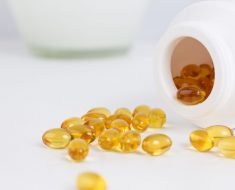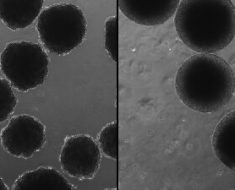Sweat and dead skin cells are common causes of pimples. Hence, pimples usually go away without treatment.
The primary cause of pimples is pores that are blocked by:
- dead skin cells
- dirt
- sweat
- natural body oils
When a pore is blocked, bacteria can build up. This causes redness, a raised area of skin, pus, or sometimes all three.
Types and causes

Pimples can form in almost any area of the body, and there are several different types:
- blackheads, which form when oil clogs a pore and the air turns it black
- whiteheads, which form the same way but remain white as the top of the pore is closed
- papules or red bumps that often feel sore when touched
- pustules that have a white tip in their center caused by pus building up
- nodules or bumps below the surface of the skin, which are often painful
Any one of these forms of pimple may develop on the scrotum.
The cause of a pimple on the scrotum is usually the same as for a pimple on the face or back:
Ingrown hair
An ingrown hair is a common cause of a pimple on the scrotum. This happens when a hair twists and grows back into the skin. It usually creates a red spot that can cause itching or discomfort.
An ingrown hair can happen when hair follicles become blocked with dead skin cells. This causes a hair to grow sideways or inward instead of outward. Pubic hair is usually curlier and coarser than the hair on the head, and this type of hair is more likely to become ingrown.
Ingrown hairs are more common on areas that have been shaved. If someone shaves the hair on or around their testicles, this may cause ingrown hairs.
Folliculitis
The hair follicles around an ingrown hair can become inflamed or infected. This is a condition known as folliculitis.
The hair follicles may swell up and fill with pus, and often appear in a cluster.
Heat rash
Heat rash can affect the skin in warm weather. It appears as small, red spots and usually causes an itching or prickling feeling.
Sweating can irritate the rash, so keeping the skin cool can help with symptoms.
Sexually transmitted infections (STIs)
Some sexually transmitted infections or STIs can cause spots to form on the scrotum:
- Herpes causes small blisters to appear on the skin.
- Syphilis is now a fairly uncommon STI, but it can cause a sore on the skin.
- Pubic lice, also known as crabs, can cause a rash of small red bumps.

Pimples often do not need any treatment. They should disappear on their own within 1 to 2 weeks.
An ingrown hair should be left alone, as it will usually work its way out of the hair follicle naturally.
Folliculitis usually does not need treatment, but a person should see a doctor if it lasts for more than a week.
Using chemicals on the body can irritate pimples. The skin should be kept clean and dry, using warm water and gentle soap for washing.
Do not pick or scratch a pimple, as this can damage it. A pimple that has burst or bled is more likely to become infected.
Heat rash can be treated at home by:
- applying a cool, wet flannel to skin to soothe irritation
- having a cool shower or bath
- wearing loose-fitting clothing
- staying hydrated by drinking plenty of fluids
Pimples that are caused by an infection or virus may need treatment. A doctor will be able to advise on the right course of action.
If a person has an STI, they may need to take a course of antibiotics. Abstaining from sexual contact until the infection has cleared will prevent it being spread to others.

Prevention
Good hygiene can help to prevent pimples. Wearing clean underwear and showering every day can help to stop pimples from developing. Taking a shower after exercise or sweating a lot can help to prevent sweat clogging pores, which can lead to pimples.
Loose-fitting underwear made from natural fabrics can stop heat and moisture from building up. If pimples are caused by ingrown hairs, avoiding shaving can prevent them from developing. Hair removal cream is less likely to cause ingrown hairs than shaving.
Takeaway
Most pimples are harmless, and will usually go away on their own. Anyone with recurrent pimples on the scrotum should consider seeing a doctor or take preventive measures.
People who have symptoms that may indicate an STI should see a doctor for a diagnosis.
Source: Read Full Article





